Tijd Maken - Making Time, 2017
| 2018-07-31 17:25:50
INVITATION 19-20-21 MEI 2017
TIJD MAKEN - MAKING TIME
SATELLIETGROEP @ FESTIVAL DESIGNKWARTIER THE HAGUE
With Masha Ru, Nishiko, Atelier NL, Maurice Meewisse, Lotte Geeven and experts of the Tempel
Location: Tempel, department of Archaeology, Nature and Environmental Education, Prins Hendrikplein, The Hague
Time: Friday May 19, Saturday May 20 and Sunday May 21 11:00 - 18:00
Free admission!
www.festivaldesignkwartier.nl
www.denhaag.nl/archeologie
Volgend op het succes van vorig jaar werkt kunstenaarscollectief Satellietgroep ook dit jaar weer tijdens Festival Designkwartier 2017 in en met de Tempel, centrum voor Archeologie, Natuur- en Milieu Educatie Den Haag.
‘TIJD MAKEN - MAKING TIME’ gaat over een gedeelde passie voor grondstoffen, scherven, constructies en reconstructies van tijd en plaats. Er bestaat een wijdverspreide fascinatie om in het landschap sporen te onderzoeken, verzamelen en archiveren. Waar die passie vandaan komt is een van de vragen waar we samen met kunstenaars, vormgevers en de medewerkers van de Tempel bij stil staan.
Following the success of last year, artists collective Satellietgroep works again at and with the Tempel, department of Archaeology Nature and Environmental Education The Hague, during Festival Designkwartier 2017
'TIJD MAKEN - MAKING TIME' is about the shared passion for raw materials, shards, constructions and reconstructions of time and place. There exists a wide spread passion for exploring, collecting and archiving traces in the landscape. The origin of this passion is one of the questions we relate to together with artists, designers and experts of the Tempel.
WORKSHOPS & MORE FOR CHILDREN & ADULTS:
Explore what the world looked like through a microscope and help wash and paste shards with the experts of the Tempel.
Each day 12:00 - 13:00 Making your own Fossils with Nishiko
Each day at 16:00 - 17:00 Collective Soil Tasting with Masha Ru
Join Atelier NL and you can buy your Zandmotor ZandGlas!
EATABLE CERAMICS & EARTH TASTING BY MASHA RU
Join Masha during the Collective Soil Tasting, each day 16:00 - 17:00
For Festival Designkwartier Masha selected 60 soils from around the world and presents 'Eatable Ceramics'. Geophagy is a phenomenon of eating earth and soil-like substances. In a number of countries all over the world geophagy is a cultural and spiritual tradition. However, in Europe and United States it is officially regarded as a psychological disorder, which is included into DSM-IV. This installation presents 'edible' soils from various countries. The clays can be tasted. We tasted all of it. Some of it we eat regularly. However, we did not analyse all of it yet. Thus, eating is at your own risk.
With special thanks to Atelier NL and Mondriaan Fonds for the support of Masha Ru in 2015-2017.
http://masharu.nl/
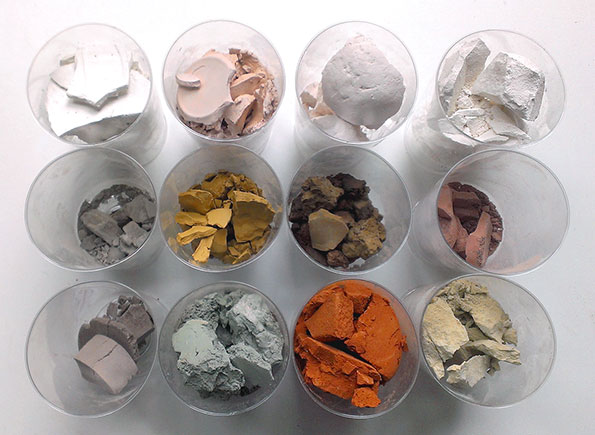
MAKING YOUR OWN FOSSILS BY NISHIKO
Join Nishiko for Making your own Fossils, each day 12:00-13:00
Shells, mammoth bones, insects, footsteps. A great duration of time is one of the key ingredients of becoming a fossil. Christiaan Rieffe, geologist at the Tempel, explained that almost anything which survived 4000 years can be considered as a fossil. Taking that as a starting point, visual artist Nishiko organises the workshop “making fossils”, in an attempt to design our own fossils. Let’s hope, someone will uncover your fossils in 4000 years!
REPAIRING WORK OF VALERIE DEMPSEY AND RONALD BOER 'BEACH LABORATORY' BY NISHIKO
A broken wine glass, four broken glass bottles and shards of specimen dishes, plaster and things made, found and received during the process.
The original artwork 'Beach laboratory; Coastal Reckoning' of Valerie Dempsey and Ronald Boer consisted of distilled seawater and extracted sea salt, which the artists collected at four points on the beach in Scheveningen, during the residency program at Badgast organised by Satellietgroep in 2010. During exhibition at Nest in summer 2011, the salt was displayed in four specimen dishes, and behind these, the water stored in four bottles. An accident took place during the opening, when someone placed a wine glass on the shelf on which the work was displayed. It fell to the ground, and the work was completely destroyed.
When Nishiko witnessed the incident, she was concurrently occupied with repairing broken objects, and so was moved to keep the shards, promising the artists to repair their work. The work is a hommage to the numerous coincidences Nishiko has had through her 'Repairing Earthquake Project' that started in 2011, just after she encountered the fallen artwork.
With special thanks to Elizabeth Ogilvie for the exchange residency program with Satellietgroep at Sea Loft, Scotland in 2016.
http://nishiko55.com/
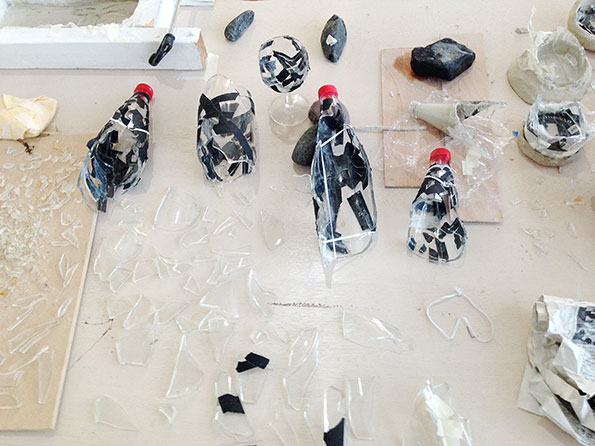
ZANDMOTOR ZANDGLAS BY ATELIER NL
Join Atelier NL and you can buy your Zandmotor ZandGlas!
Last year during Festival Designkwartier designers Nadine Sterk and Lonny van Ryswyck of Atelier NL presented the research, this year the product!
Nadine and Lonny used the sand from the Zandmotor and developed ZandGlas in collaboration with our network of scientists. For the manufacture of the limited edition, the designers worked together with Gert Bullée, top glassblower in the Netherlands. At high temperatures, the wild sands of the Zandmotor melt and eventually transform into characteristic, pale green glass. Sleek and elegant design in a sophisticated colour, and with charming imperfections that make each object unique. These are the very first glass products in a larger series that Atelier NL is crafting out of sand from dunes, beaches, rivers, deserts, mountains and sandpits in the Netherlands and beyond. Photo: Teun van Beers.
www.ateliernl.com
THE NOISE OF TIME BY LOTTE GEEVEN
If you listen carefully you can hear a very soft and constant rustling sound in the background wherever you are: the noise of time. Resident artist Lotte Geeven - who is at the moment researching acoustic sand - created a small edition of acoustic hourglasses entitled ’ The noise of time’ after the eponymous novel by Julian Barnes. These instruments filled with very fine sand can be played by one simple hand-gesture that sets 1.5 millions grains in motion. This is one small hand out of the monstrous amount of approximately seven quintillion five quadrillion grains of sand on earth that are rolling and swirling over the globe; choreographed by winds and currents.
www.singingsand.org | www.geeven.nl
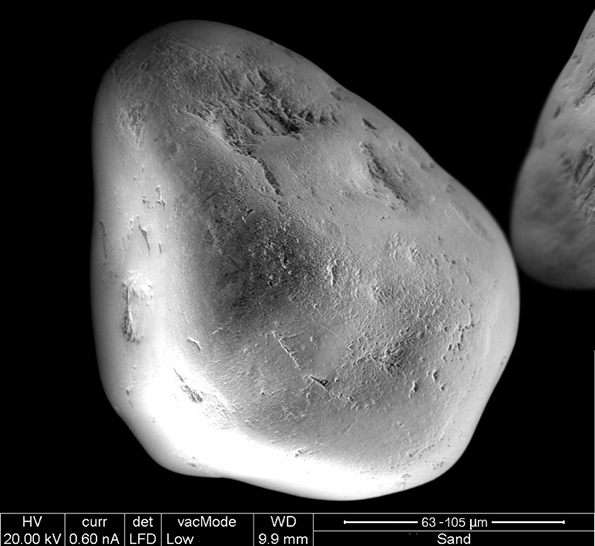
WERKLANDSCHAP ZANDMOTOR - LABOUR LANDSCAPE ZANDMOTOR
BY MAURICE MEEWISSE
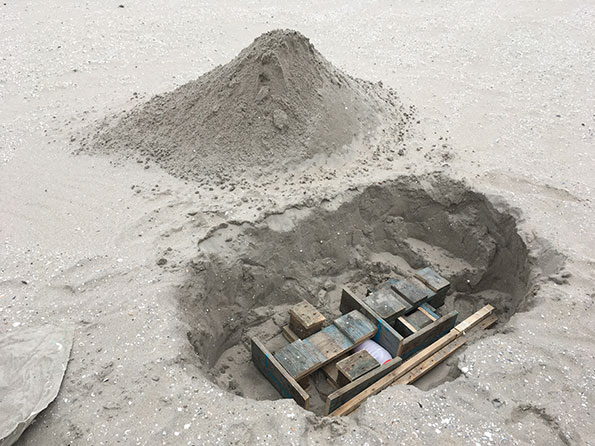
To Whom belongs the Sea? 2015
| 2018-07-31 17:21:35
TO WHOM BELONGS THE SEA?
SATELLIETGROEP @ FAILED ARCHITECTURE
Date: September 24, 2015
Time: 16:30 - 18:30
Location: TodaysArt Festival at Zuiderstrandtheater, The Hague
Satellietgroep hosted Failed Architecture at Badgast. Curator Jacqueline Heerema joined Failed Architecture at TodaysArt Summit - Bright Collisions Program. During this edition of TodaysArt, Failed Architecture explores the defamed architecture and tourist infrastructure of Scheveningen and other Western European seaside towns, taking into account international and historical perspectives. Their aim is to open up new perspectives on the alleged failure of post-war seaside architecture - from what it's perceived to be, what's actually happening and how it's represented to the public.
More information: www.failedarchitecture.com/fa-at-todays-art-scheveningens-seaside-architecture/
To Whom Belongs The Sea? by Jacqueline Heerema
Soon the problems of beach resorts will be solved by climate change. With the prospect of a more wet and stormy climate tourism at the Dutch shores will become unattractive.
Time for change!
Artistic fieldwork
How incomprehensible is it to live in a country below sealeavel?
Understanding the Netherlands is basically understanding our relationship with water and the sea. Satellietgroep is based in The Hague since 2006 and explores through arts the social and ecological impact of the sea and coastal transitions on cities, people, communities and environments in The Netherlands and abroad. Satellietgroep invites artists, philosophers, designers, architect and urbanists to explore the sea and coastal transitions.
Oceans, seas and coastal regions are under tremendous pressure, worldwide.
What trigered the artists initiative Satellietgroep was the lack of involvement of arts and culture in the master plans for coastal transitions in The Netherlands, specially in The Hague, with top down masterplans for Scheveningen, Kijkduin, and the prospect of islands in front of the coast.
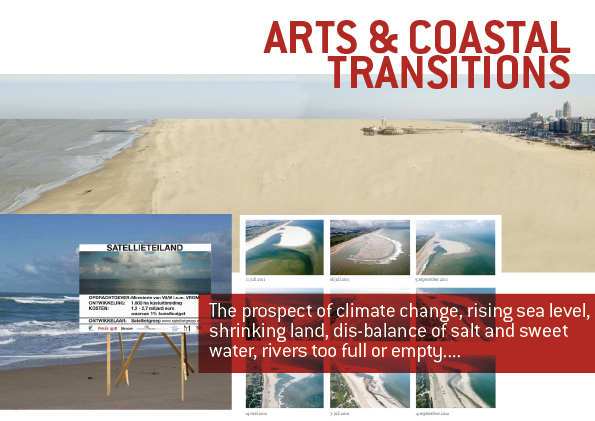
Spatial Planning North Sea 2050
With the prospect of climate change, rising sea level, shrinking land, dis-balance of salt and sweet water, rivers too full or empty, we face major coastal transitions. Transitions in spatial and economical sense that may lead to conflicts, estrangements, loss of heritage and loss of more informal cultural uses of public coastal space.
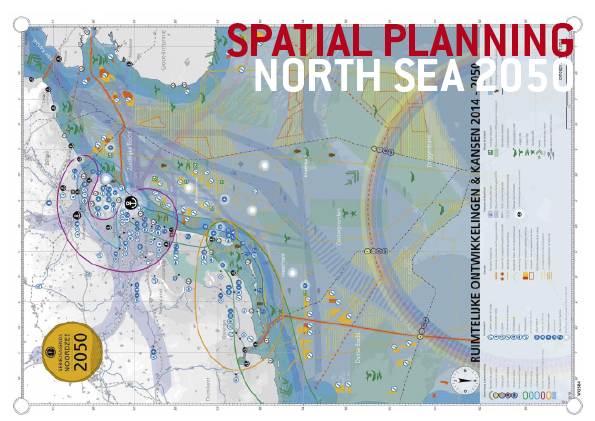
There is never one story to tell
We all live in the bubble of a Truman Show.
One day you wake up and realize what kind of world you live in.
Recently the dikes at Scheveningen turned into the dunes landscape it once was. So, lets talk about myths, appropriating the sea, manipulations, invented traditions and staged authenticity!
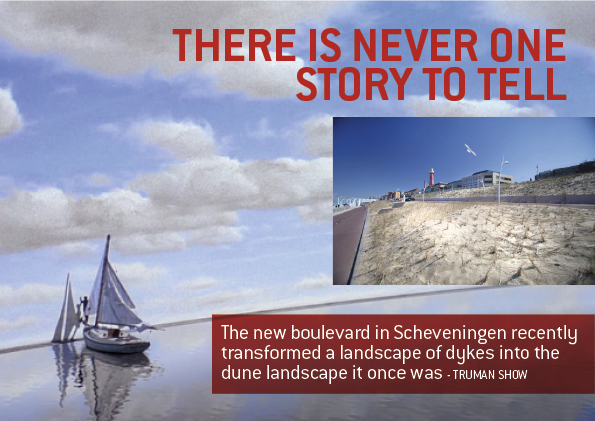
Theme park The Netherlands
Living in the Netherlands means living mostly in an artificial man-made environment. The Dutch are masters in disguising the cultural landscape as a natural one.
We tend to design, construct, reconstruct and deconstruct the coastal landscape to fit it to our needs. Like living in a theme park, pleasing to the eye without worries and full of leisure and endless entertainment.
In this picture the grandmother celebrates the first time she is playing with her grandson on the beach at Scheveningen. This picture tells a story about the Netherlands: the sand they play with is put there for coastal protection, the boulevard is a dike in boulevard for coastal protection, in the background the pier is a derelict remnant of former touristic venues competing with touristic destinations elsewhere and in the middle the Dutch flag completes the picture.
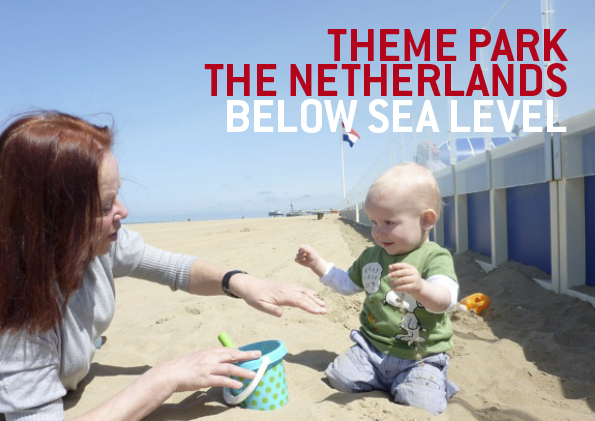
So, what happens elsewhere?
Belgium: parallel to the coastline
Every Belgian is said to be born with a brick in his stomach. Building your own house has shaped also the Belgian coastline. Developed as a sequenze of rectangular blocks of private housing along promenades it transformed with mass tourism into high rise apartment building catering for the Belgium dream to spend retirement at the seaside.
The good thing is, that a lot of people live at the coast and enjoy a private seaview, can travel along the coast by parallel tramway and eat (Dutch) mussles. The offsite is, that the Belgian coast is often called Atlantik Wall and dunes became scarce.
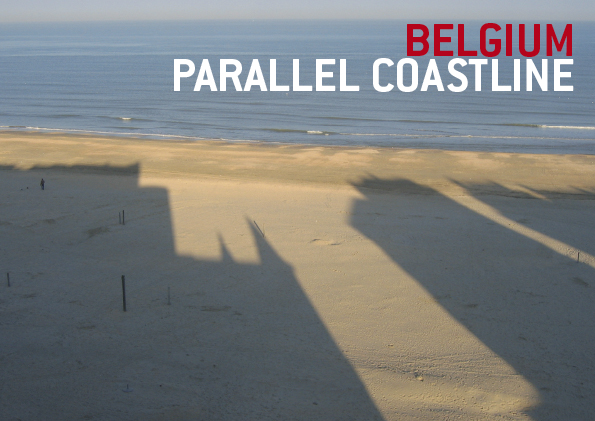
La Grande Motte: the paradox of mass tourism in a Tabula Rasa
After WOII the French goverment invented 'Droit a la Mer' - the social ideal based on the idea that a holiday on the seaside had to be democratized. More wealth, leisure and mobility for all made spending leisure time at the seaside accessible for everybody.
In a swamp area in the south of France a new and complete beach resort was designed by Jean Balladur with special architecture for mass tourism, influence by Oscar Niemeyer.
It was at first regarded as an ideal research area for new residential ideals, manufactured nature and innovative solutions for coastal expansion. At the same time the paradox of mass tourism arose: in search of paradise you find a composed touristic scenery.
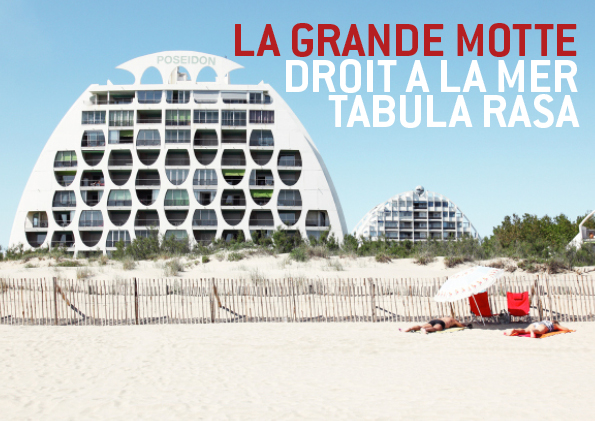
Orange County in Kemer, Turkey - copy paste architecture
Is search of the perfect touristic destination for the Dutch, including good weather and at the same time offering the familiar comfortable Amsterdam scenery, the all inclusive Turkish beach resort Orange County at Kemer was developed.
The advertisement reads: 'When you arrive at the hotel you will find yourself at the central station of Amsterdam, including Dutch information boards. Also striking are the Amsterdam canal houses complete with slanted walls. Also the well known windmill is not lacking. In short; a unique hotel with a Dutch twist under the Turkish sun.'
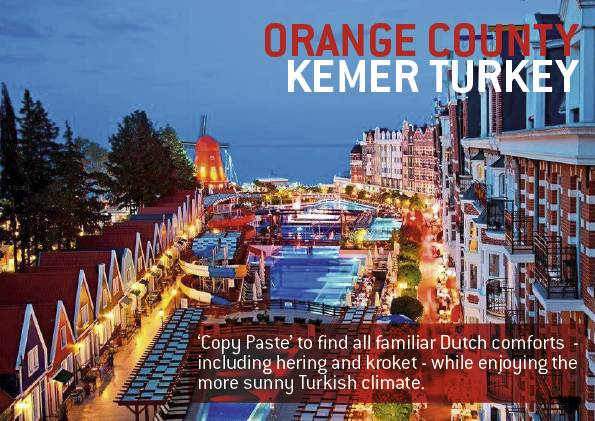
Lindoduin
In Scheveningen however, the high rise appartment building Lindoduin was built with a city view. Resilient people turned their bedrooms into the living room facing the sea.
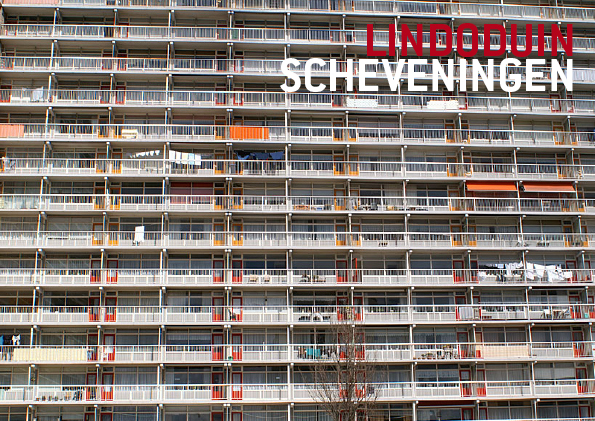
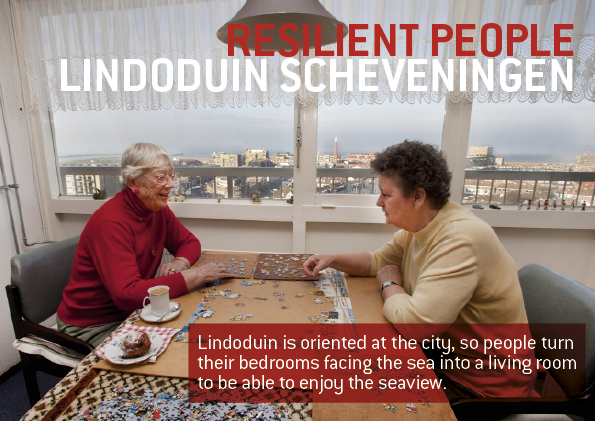
So, who decides what?
Zandmotor - Building with Nature
Understanding coastal architecture in The Netherlands implies understanding some of the Dutch history and the resilience of the Dutch landscape and people.
It is a layered landscape, showcasing the anthropogenic impact through ages: from building dikes and polders starting in the middle ages to fortresses, bunkers, harbours and (only) for the last 150 years beach resorts. It is a layered landscape to be viewed as a whole in stead of cutting it up in superimposed differences. The Dutch coastal landscape is not a Tabula Rasa!
Though we percieve and manipulate the coastal landscape as a natural landscapes of beaches and dunes it is in fact a cultural man made landscape. Coastal architecture reflects our relationship with water and the sea!
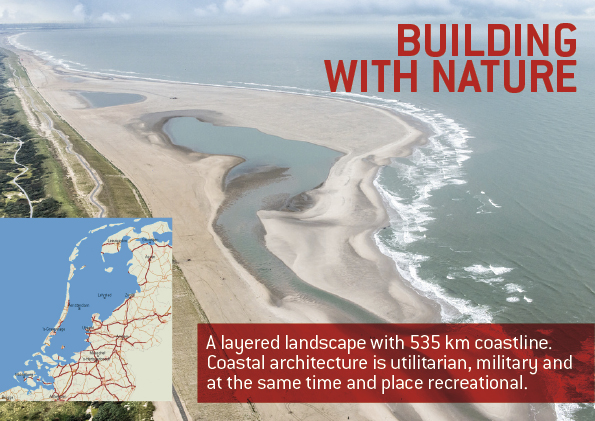
Delta Works
It is a resilient landscape, built to protect against the sea, built on fear of drowning and monsters. Hunter/gatherers migrated back and forth from the higher inland hills across the swamps to the dunes. Only poor people - like fisherman - lived precarious lifes in the dunes. Villages were swallowed by the sea mutiple times. Living in The Netherlands is a story about the liminality of coexistence between man and water. Safety is a big issue! In the latest Prinsjesdag budget 20 billion euro is designated for enforsing the dikes.
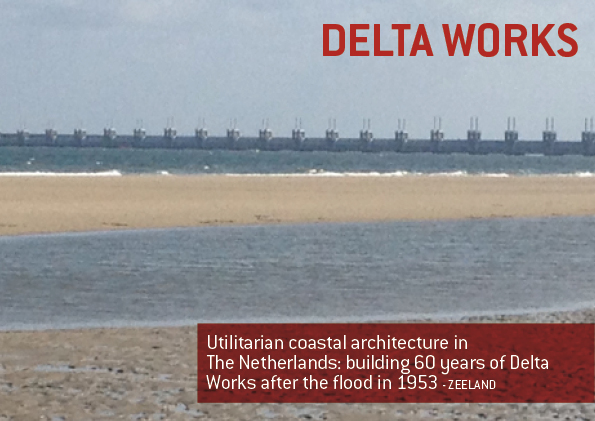
Bunkers
It is a hostile landscape, built to attack and defend, built to gain. Trade and war dominated the shores. Man is an explorer and invented cartography to chart the world and model reality and it’s myths. With the explorations of the sea for discovery of new countries and colonies, trading for goods, trafiking of people and cultures traders became rich and started hunting in the dunes, building boats and harbours. Wars left relicts and scars in the coastal landscape.
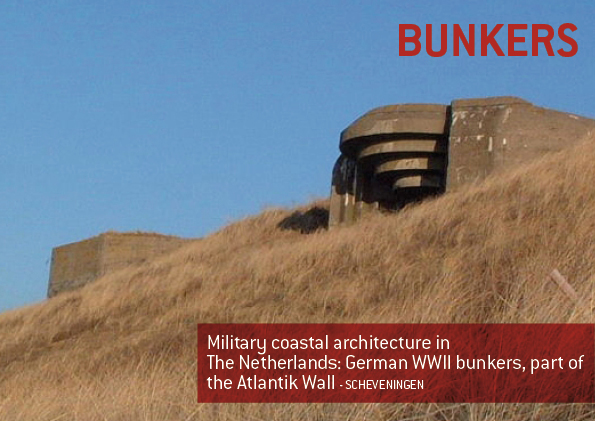
Tourism
Starting around 1800 the perception of the coast shifted to a landscape for wellness with tourists in seach of paradise. The coastal landscape became an imaginairy construction with the rise of Kurhauses, boulevards and casino's for the happy rich. Sea view became valuable. Mass tourism turned the shore into a commercial landscape in which beaches are more and more converted into private enterprises.
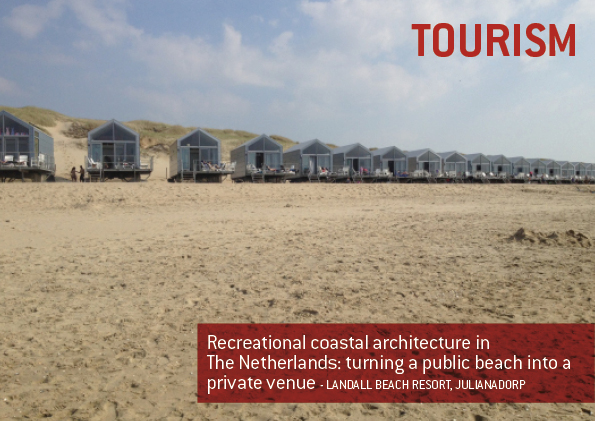
People in Scheveningen are born with sand between their teeth
However - it is a landscape to express your identity, that you are different! Even through invented traditions and staged authenticity!
Once a fishing village swallowed by the city The Hague there is still a vibrant Scheveningen identity. Even the construction of identity is appreciated. When in the fifties an economic impuls was needed for the declining fishing industry, the municipality of The Hague invented 'Vlaggetjesdag', a special day to celebrate the new herring. In search of branding they adopted the wapon of an extinct family at Hoorn or Enkhuizen: the 3 herrings! It became broadly adopted by the Schevening people as their logo and is recently even stamped into the garbage cans at the new boulevard of Scheveningen.
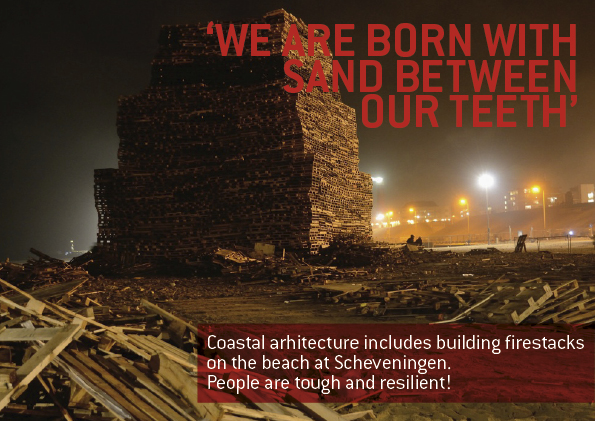
Badgast
In the most multi layered spot on the shores of the Netherlands Satellietgroep built Badgast. Scheveningen has all the stories to tell, including the myth of free horizon - and the illusion of the seaside as a place of mental and physical freedom, as a place to marry and mourn.
A cultural zenith! Badgast is built by recycle architects Refunc in the middle of urban beach community F.A.S.T. at the pivot point of boulevard and harbour. Built on top of a WOII bunker. Wedged between 2 fish and chips shops. Built on a derilict plot as an 'in between' adventure, instigated by reccession and (still) waiting for the highrise hotel to be built on the spot.
I love planning and politics! They shape - again and again - worlds beyond our imagination.
They seem to forget that Scheveningen is not shaped into 3 superimposed categories of Bath, Village or Harbour, but it is a layered coastal landscape, including residents and visitors.
Over and over residents combat superimposed changes, and alliances arise between fishermen and rich folks. It may be time to listen?
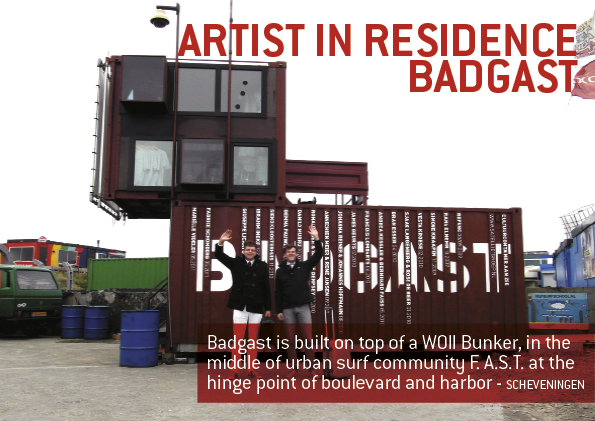
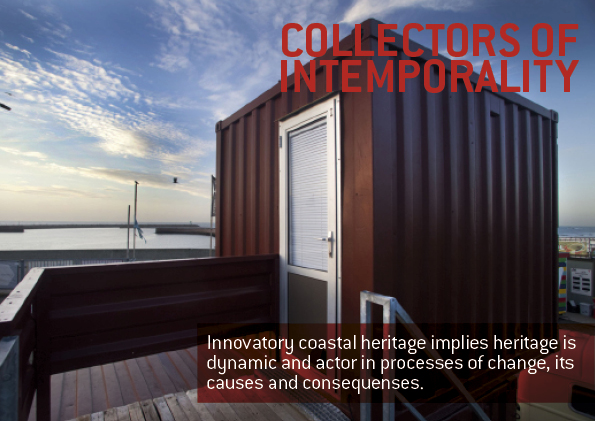
Resilience
I remember as a child that the Kurhaus was boarded up and destined to be demolished. Recently it just escaped bankrupcy again. The pier is closed for public as a result of the battle between the city municipality and Van der Valk family. The habour is turned into a Marina, where new residents in recreation houses complain about the noise and smell of the fishing boats. The Hague people do not go to Scheveningen and resist tourism spreading across the harbour. The Norfolkterrain itself was designated for culture, became a battle ground for competing ideas, but now, after the failure of the Spuiforum, now finally the terrain opens up for culture!
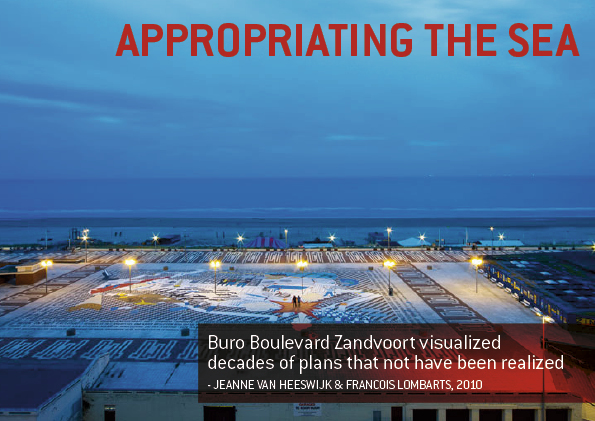
Appropriating the Sea
There is never one story to tell: the myths of coastal planning!
Buro Boulevard Zandvoort was a cooperative project by Jeanne van Heeswijk and Francois Lombarts. At the Burgemeester van Fenema square next to the boulevard of Zandvoort they set up a design studio. From this location they researched all the plans for the area that have been made over the years. Decades of plans that not have been realised. They also investigated the current needs and ideas of the inhabitants and visitors of Zandvoort.
The outcome of these researches where combined in order to create a big artist impression of all the drawings, plans, ideas and impressions that where made for this seaside area. With a team of street painters a huge drawing was painted on the square. It combined quotations from the many reports and municipal development plans with impressions from ideas for the area. All functions that the location could have had, but for various reasons still does not seem to have.
Thank you for your attention!
Who is the 'self' in selfsuffiency?
| 0000-00-00 00:00:00
WHO IS THE 'SELF' IN SELF SUFFICIENCY?
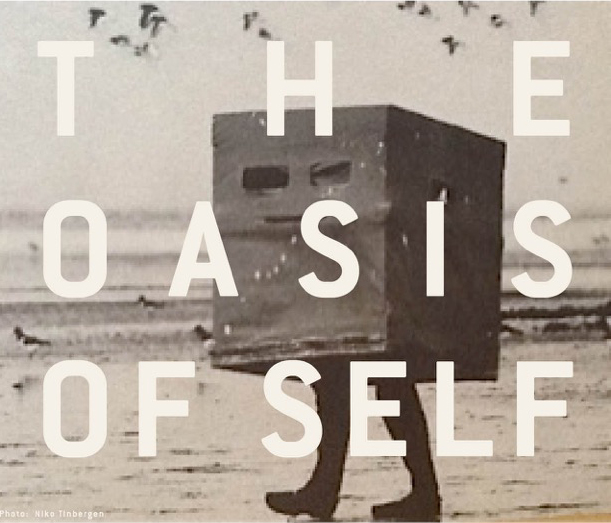
In the Anthropocene humans affect the earth on a geological scale. Satellietgroep explores the Zandmotor, a prime example of the anthropogenic frame of mind, as a cultural phenomenon. We need engaged artists and passionate scientists to unexpectedly explore the world around us and jointly test our perceptions.

Satellietgroep @ NYC
OVER
Kunstenaarscollectief Satellietgroep (Den Haag, 2006) onderzoekt de zee, kusttransities, klimaatverandering en de rol van de mens in deze processen, in binnen- en buitenland.
Met de actuele discussie over het nieuwe geologische tijdperk, het Antropoceen genoemd, komen we tot het inzicht dat de mens ook sturend is in veranderingsprocessen op aarde. Veel van ons veranderende klimaat hangt nu immers samen met de invloed die wij als mens uitoefenen op onze leefomgeving.
Besef van het kustlandschap als cultuurlandschap draagt bij aan het beter leren begrijpen van de geschiedenis (waar komen we vandaan) en de toekomst (waar gaan we naartoe).
Satellietgroep onderzoekt samen met kunstenaars, ontwerpers en experts sinds 2014 de Zandmotor als cultureel fenomeen, als voorbeeld van de antropogene invloed van de mens op aarde. Na eeuwenlang bouwen van dijken, dammen en sluizen die effect hebben op onder meer verzilting en het verhinderen van transport van sedimenten naar zee (de zogenaamde zandhonger langs de Nederlandse kust) is de Zandmotor het nieuwste voorbeeld van de hybride relatie mens en natuur: build by man, performed by nature.
De Zandmotor is een nieuw kustlandschap in Zuid-Holland, ten zuiden van Den Haag. Als een efemeer Land Art project is de Zandmotor in 2011 gebouwd met 21,5 miljoen m3 Pleistoceen zand van de bodem van de Noordzee, uit de tijd dat de mammoeten wandelden over de bodem van wat we nu de Noordzee noemen. Het is een openbaar toegankelijk wetenschappelijk onderzoeksterrein om nieuwe kennis te genereren voor de toekomstige kustbescherming, genaamd Bouwen met de Natuur. Uniek, want de Zandmotor is het enige stukje buitendijks Nederland dat is gebouwd als experiment om te veranderen en zelfs op te gaan in zee, strand en duinen rond 2031.
ABOUT
Artists collective Satellietgroep (The Hague, 2006) explores through arts & design the social and ecological impact of the sea and coastal transitions on cities, people, communities and environments, and vice versa the influence of mankind on coastal transitions and climate change in The Netherlands and abroad. Our aim is to enhance public and professional awareness on coastal transitions. Satellietgroep hosts artists in residents for artistic fieldwork, connect with locals and experts and develop new concepts and works that reflect the resilience of coexistence of man and water, in past, present and future. Long term projects are 'Badgast' - artist in residency program at The Hague/Scheveningen (2009-2014), 'Now Wakes The Sea', the international exchange residency program in collaboration with international cultural partners (since 2012).
Starting September 2014 we program the first artistic research on the Zandmotor in collaboration with Villa Ockenburgh/Locatie Z (2014-2015), with international collaborations with Nida Art Colony (LT), NCCA St.Petersburg (RU) and LMCC (NYC).
Satellietgroep programs 3 DCR Gueststudios at DCR, the cultural incubator in The Hague that also houses 35 permanent studios for artists and designers, including the studio of Satellietgroep, Zaal 3 - laboratory for performing arts of Theater aan het Spui, sound studio Loos, Cloud Danslab and exhibition space Nest. If you are interested in a short or long term cultural visit in The Hague, chack out: www.gueststudio.com | www.dedcr.nl
The curatorial team of Satellietgroep consists of Jacqueline Heerema, Francois Lombarts and Lotte Bosman.

Image: Celestial Vault by James Turrell and Zandmotor
S.MAG#2
| 2018-07-31 17:36:43
SOLD OUT
S.MAG#2 Geen Zee | No Sea, 2008
€10 euro ex shipping
smag@satellietgroep.nl

Thinking about the sea equals thinking about existence. The sea is reality, inextricably bound up with earth, life, origin, nutrition, oxygen. In contrast to existence there is nonexistence - no sea. An impossibility in reality. Without sea, there would be no water and no life, at least not as we know it. But it is possible to think of the sea as nonexistent. As a concept or idea. A theoretical possibility superseding reality.
Guest editors: Maarten de Kroon, Francien van Westrenen; artwork by Lizan Frijesen; contributions by: Narda Alvarado (BO) | Pierre Derks | Olafur Eliasson (DK) | Michael Elmgreen (DK) & Ingar Dragset (N) |Maarten Vanden Eynde | Lizan Freijsen | Koen Geurts | Jacqueline Heerema | Florentijn Hofman | Robin Ineke | Bas de Koning | Maarten de Kroon | Kadir van Lohuizen | Amalia Pica (BR) | Joaquin Sanchez (PY) | Jesse Skolnik | Petra ter Veer | Barbara Visser | Esther van Waalwijk | Francien van Westrenen | Martijn van der Wiel | Jessica de Wolf |
S.MAG#1
| 2018-07-31 17:36:09
S.MAG#1 ZEEDELIJK
First edition Sea Magazine, 2007
€ 5 euro ex shipping
smag@satellietgroep.nl
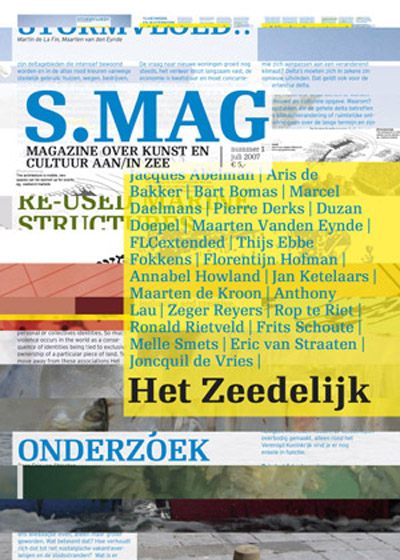
First edition of a new magazine about the sea, with contributions by: Jacques Abelman | Aris de Bakker | Bart Bomas | Marcel Daelmans | Pierre Derks | Duzan Doepel |Maarten Vanden Eynde | FLCextended (BE)| Thijs Ebbe Fokkens | Florentijn Hofman | Annabel Howland | Jan Ketelaars |Maarten de Kroon | Anthony Lau (UK)| Zeger Reyers | Rop te Riet | Ronald Rietveld | Frits Schoute | Melle Smets | Eric van Straaten | Joncquil de Vries |

